Sprawl up, green our cities
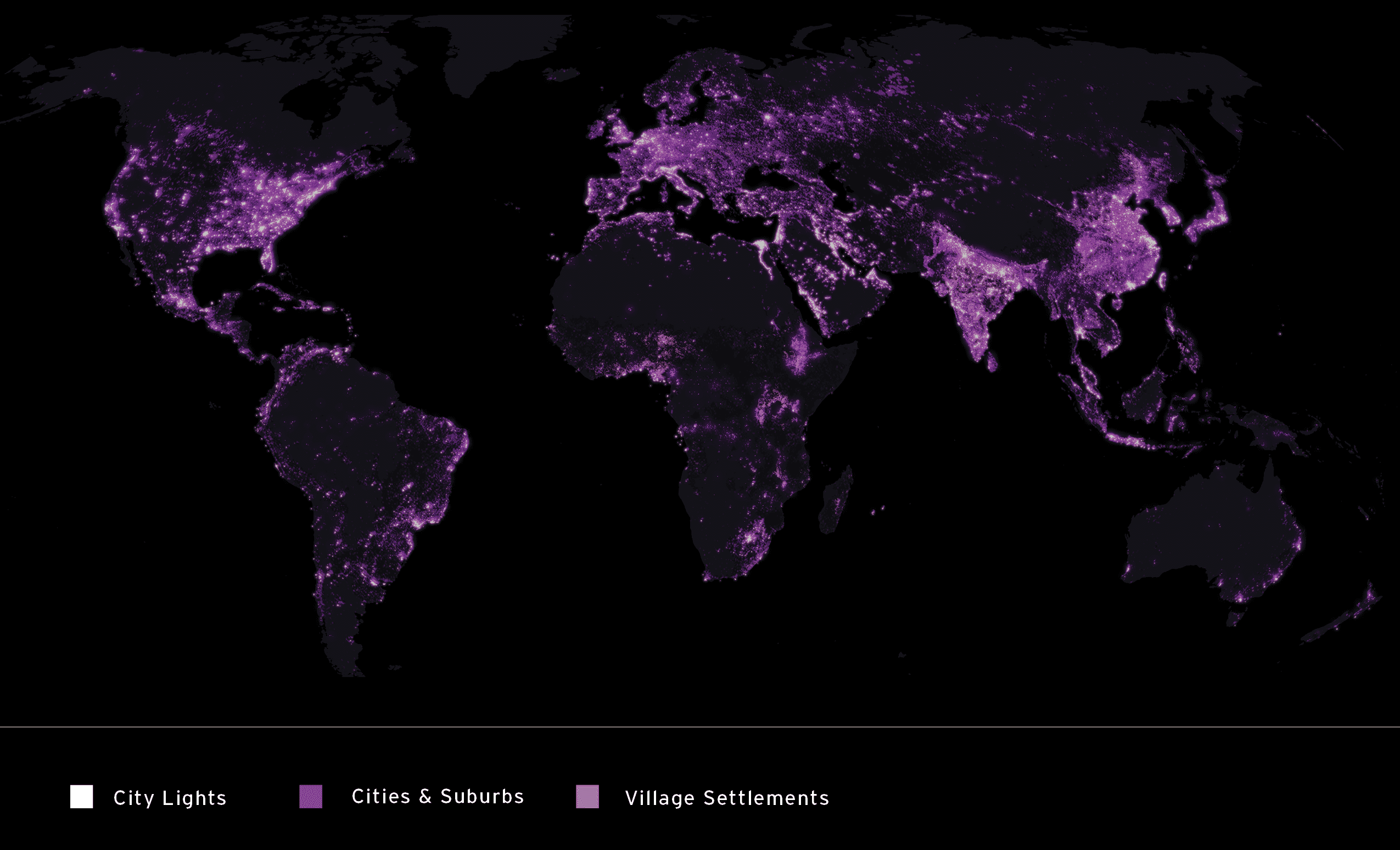
SUBURBAN HOUSEHOLDS GENERATE UP TO SIX TIMES MORE GREENHOUSE GAS EMISSIONS PER CAPITA THAN HOUSEHOLDS IN DENSE URBAN CENTERS.
Dense cities are more resource efficient. By sprawling up, rather than out, we can build sustainable efficient cities and reduce emissions from construction, heating and lighting, transportation and waste management.
maps sources: Earth At Night, NASA. 2016 | Anthropogenic Biomes, 2017. Anthroecology Lab. EC Ellis et al. (Dense Urban Settlements, Mixed Settlements, Villages)
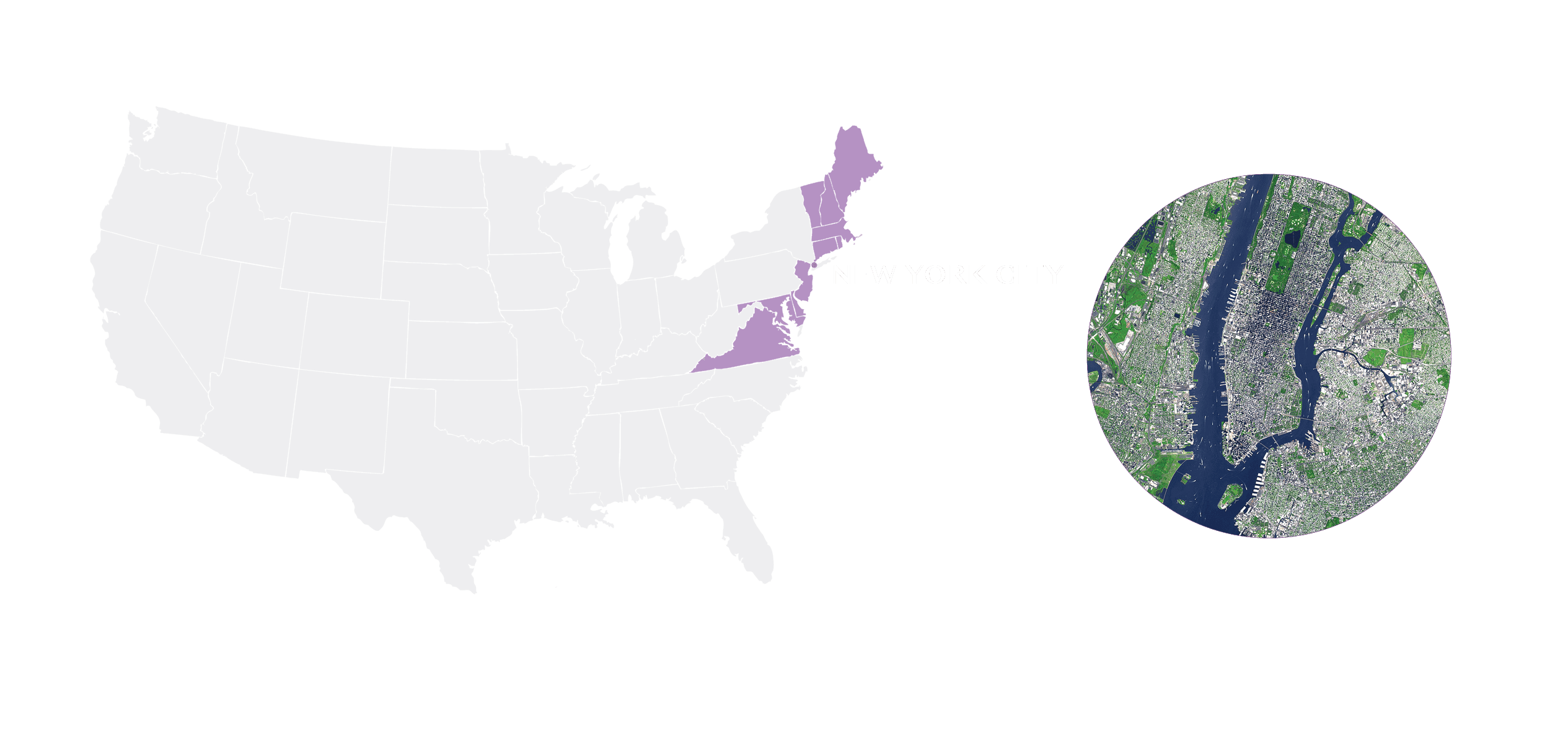
AMERICANS TEND TO THINK OF DENSE CITIES AS DESPOILERS OF THE NATURAL LANDSCAPE, BUT THEY ACTUALLY HELP TO PRESERVE IT.
If you spread all 8.5 million New York City residents across the countryside at the population density of Vermont, you would need a space equal to the land area of the six New England states plus New Jersey, Delaware, Maryland, and Virginia.
Source: ”The Greenest Places in the U.S. May Not Be Where You Think” David Owen, Yale Environment 360, 10/26/2009. Image: Nolita, Manhattan. Kidfly182, CC BY-SA 4.0, via Wikimedia Commons
SPRAWL UP
revitalize cities with sustainable adaptive reuse
embrace urban infill development
sprawl up, not out, with vertical density

DENSE CITIES ARE BETTER FOR THE ENVIRONMENT
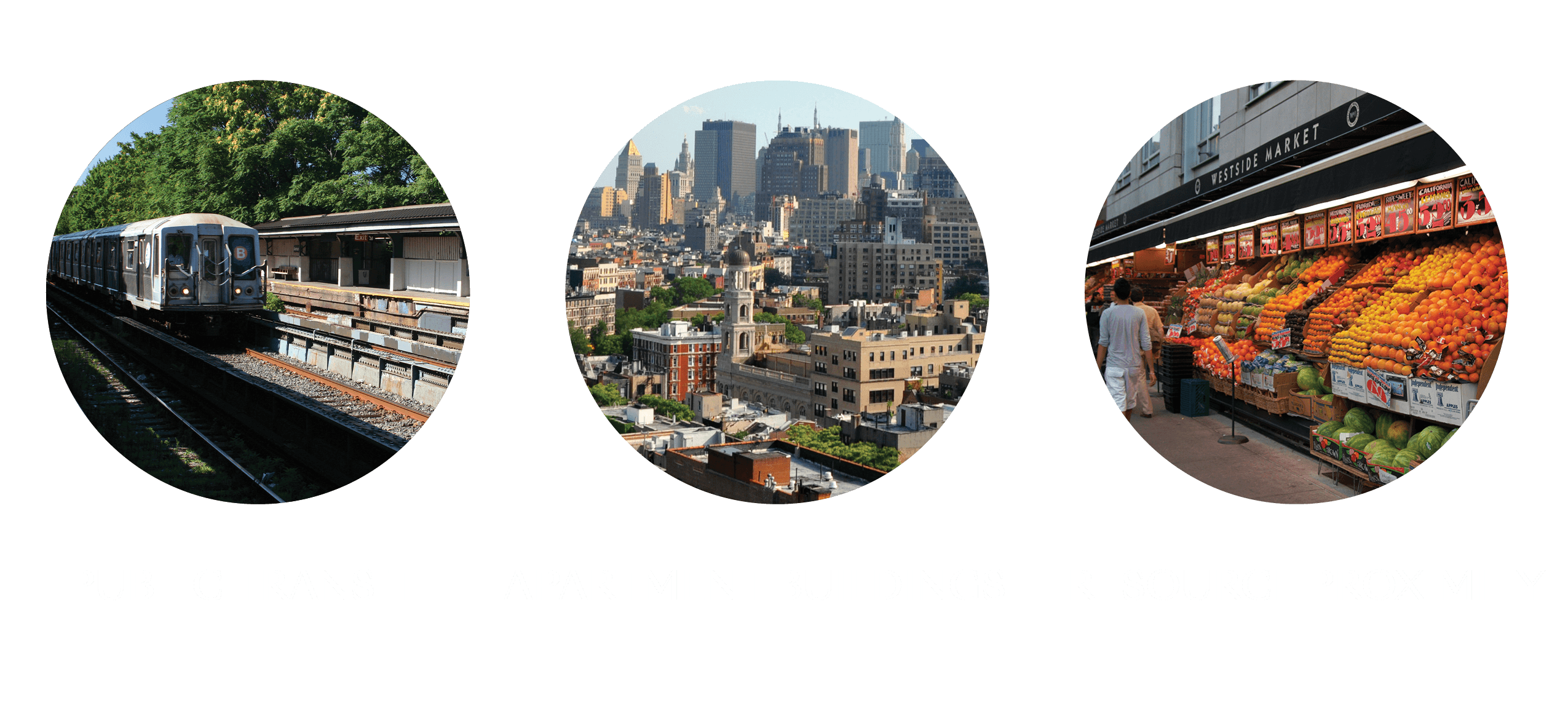
Public Transit: While around 90 percent of American households own at least one car, that number is 23 percent for Manhattan. Fewer cars generally means fewer carbon emissions, and that less land has to be put aside for parking.
Apartment Buildings: Cities take up less space per person. Sharing walls, floors and ceilings between households reduces energy costs significantly, and since city homes have no lawns, they waste less water too.
Resource Proximity: Consider the grocery store: in the city, there are typically multiple grocery stores in walking distance from any home. Outside the city, residents sometimes drive several miles just to pick up necessities.
Sources: “Six Ways Dense Cities are Better for the Environment” Cody Fenwick, Care2 Network.
URBANIZATION THAT IS "MORE COMPACT, WALKABLE, AND CO-LOCATED CAN REDUCE FUTURE URBAN ENERGY USE BY 20-25% IN 2050."
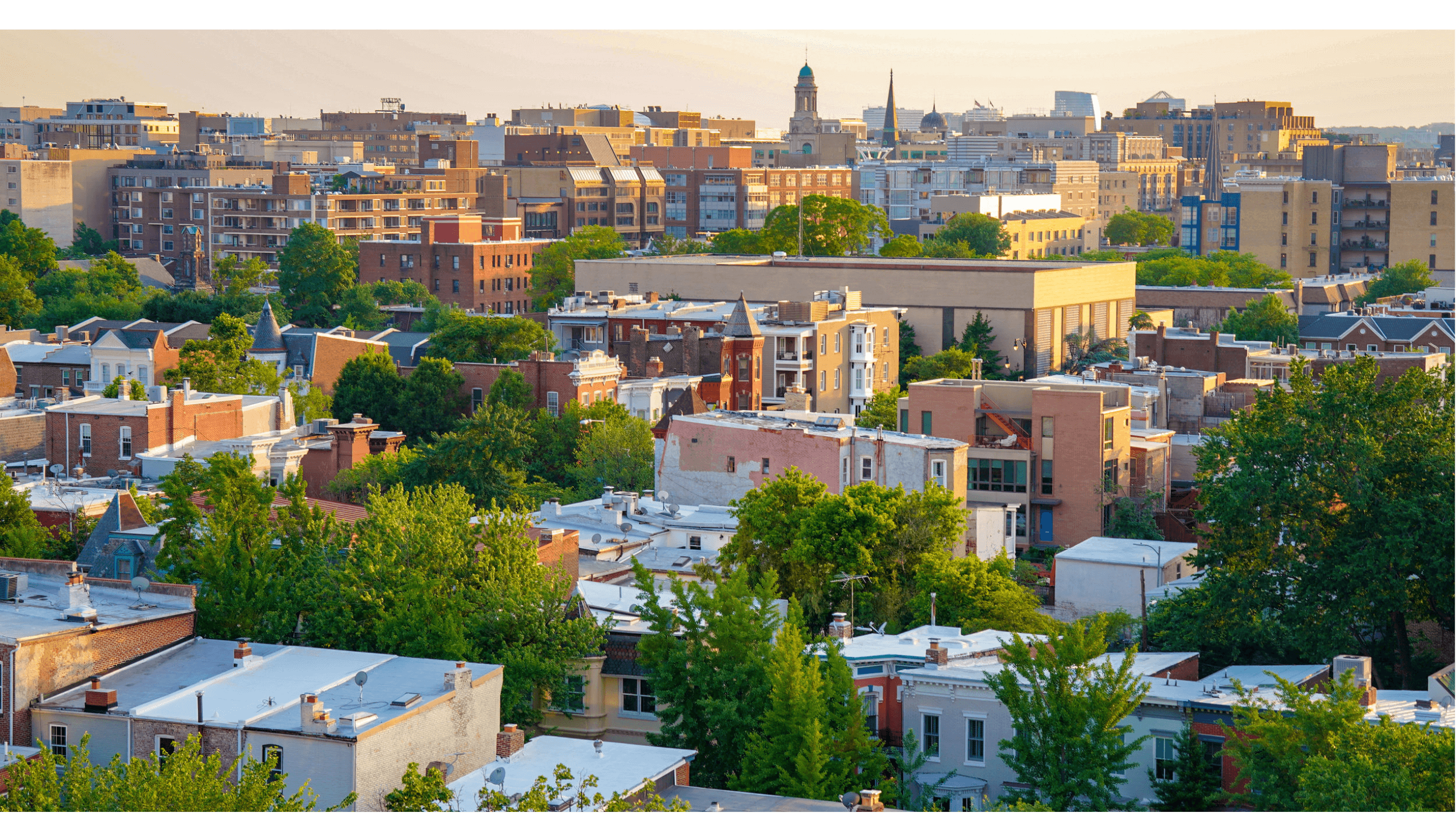
"One of the most effective ways to cut the carbon emissions of cities [is] to stop the relentless expansion of urban sprawl by promoting infill housing, the carefully planned creation of extra housing in underutilized parts of cities to reduce car dependence and improve the efficiency of infrastructure and energy use."
Sources: Energy Reduction - "Urban Systems and Other Settlements" IPCC 2022: Climate Change 2022: Mitigation of Climate Change. Chapter 8. | Infill Housing - "A Key to Controlling Emissions: More Buildings in a Cityʼs Unused Spaces" Peter Wilson, New York Times. Sept 19, 2022. Image: Ted Eytan. CC BY-SA 4.0
BUILD EFFICIENTLY

"Buildings currently account for about 30–40% of global greenhouse gas emissions - including nearly 10 Gt CO2e energy-related emissions, primarily from energy used for heating, cooling, lighting etc.; and 11 Gt CO2e embodied carbon in construction materials... dominated by concrete and steel."
Source: Wang, K., M. Costanza- van den Belt, G. Heath, J. Walzberg, T. Curtis, J. Barrie, P. Schroder, L. Lazer, and J. C. Altamirano. 2022. “Circular economy as a climate strategy: current knowledge and calls-to- action.” Working Paper. Washington, DC: World Resources Institute.
USE FSC, RECYCLED, AND SUSTAINABLY MADE MATERIALS WHEN YOU BUILD OR REMODEL
"The built environment uses almost half the materials extracted globally every year and current projections estimate that by 2060 across the world the equivalent of the city of Paris will be built each week... in addition to a transition to renewable energy and energy efficiency, how we design, construct, and use buildings will matter greatly."
Sources: Jahren, Per and Tongbo Sui. “Concrete + Sustainability.” 2013. International Stainless Steel Forum. “Stainless Steel and CO2: Facts and Scientific Observations.” 2010. CannonDesign. “Material Life: Embodied Energy of Building Materials.” 2013. NSG. “Making a Difference to Our World Through Glass Technology.” 2013.
CONSTRUCTION WASTE
About 40% of solid waste is building related. Only 65% is recycled.

A circular scenario for the built environment [integrating durable, mixed-use modular buildings, constructed with reused and non-toxic materials] could reduce global CO2e emissions from building materials by 38% or 2.0 billion tonnes CO2e in 2050, due to reduced demand for new steel, aluminum, cement, and plastic."
Sources: Infographic - American Institute of Architects (AIA) “Construction Waste Management Strategies”; AIA 50to50 Initiative; Jahren, Per and Tongbo Sui. “Concrete + Sustainability.” 2013; International Stainless Steel Forum. “Stainless Steel and CO2: Facts and Scientific Observations.” 2010; CannonDesign. “Material Life:Embodied Energy of Building Materials.” 2013; NSG. “Making a Difference to Our World Through Glass Technology.” 2013. | Built Environment Materials Usage and Circular Scenario - "Completing the picture: How the circular economy tackles climate change." Ellen Macarthur Foundation. Material Economics.
INVITE NATURE IN
INCREASE PARKS, TREES, AND URBAN GREEN SPACE
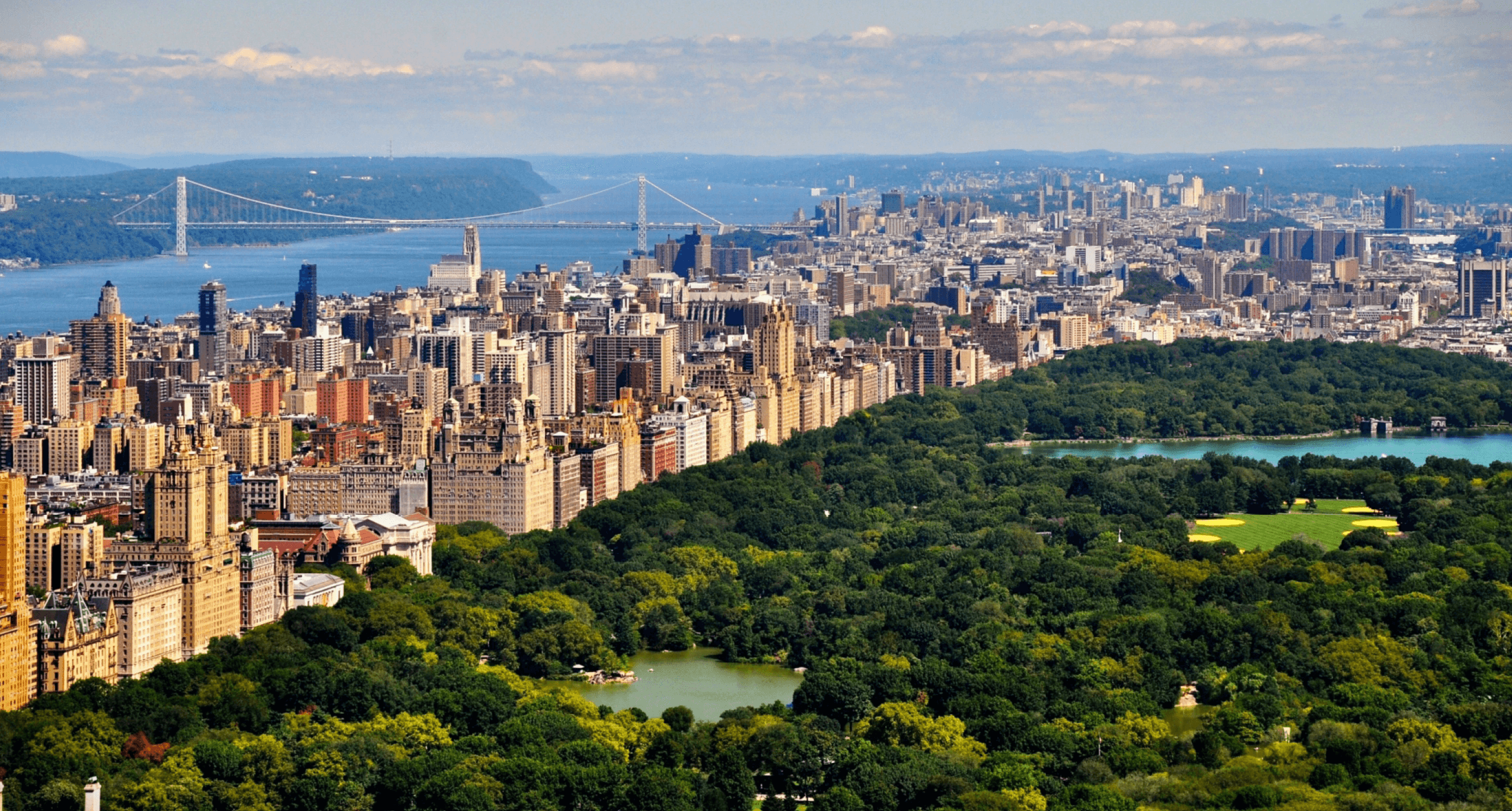
Central Park serves as an important bird corridor that supports over 200 species of birds.
"JUST ONE LARGE MATURE CANOPY TREE CAN SEQUESTER... ABOUT 22 POUNDS OF CO2 ANNUALLY... PRODUCE 6,000 POUNDS OF OXYGEN AND ABSORB 1,000 GALLONS OF RAINWATER."

"Scientists have found that when done thoughtfully, planting urban trees and enhancing urban forests and urban green canopy can lower air temperatures in city neighborhoods by around 10 degrees. And in a rapidly warming world, that could literally mean the difference between life and death."
Sources: What Is Urban Forestry? onetreeplanted.org | How Planting Trees Helps to Reduce the Urban Heat Island Effect, onetreeplanted.org
BUILD FOR RESILIENCE
conserve and restore coastal buffer zones
work with water, not against it
build for biodiversity with native species
ESTIMATES SUGGEST THAT THE GLOBAL ECONOMIC COSTS TO CITIES, FROM RISING SEAS AND INLAND FLOODING, COULD AMOUNT TO $1 TRILLION BY MID CENTURY...
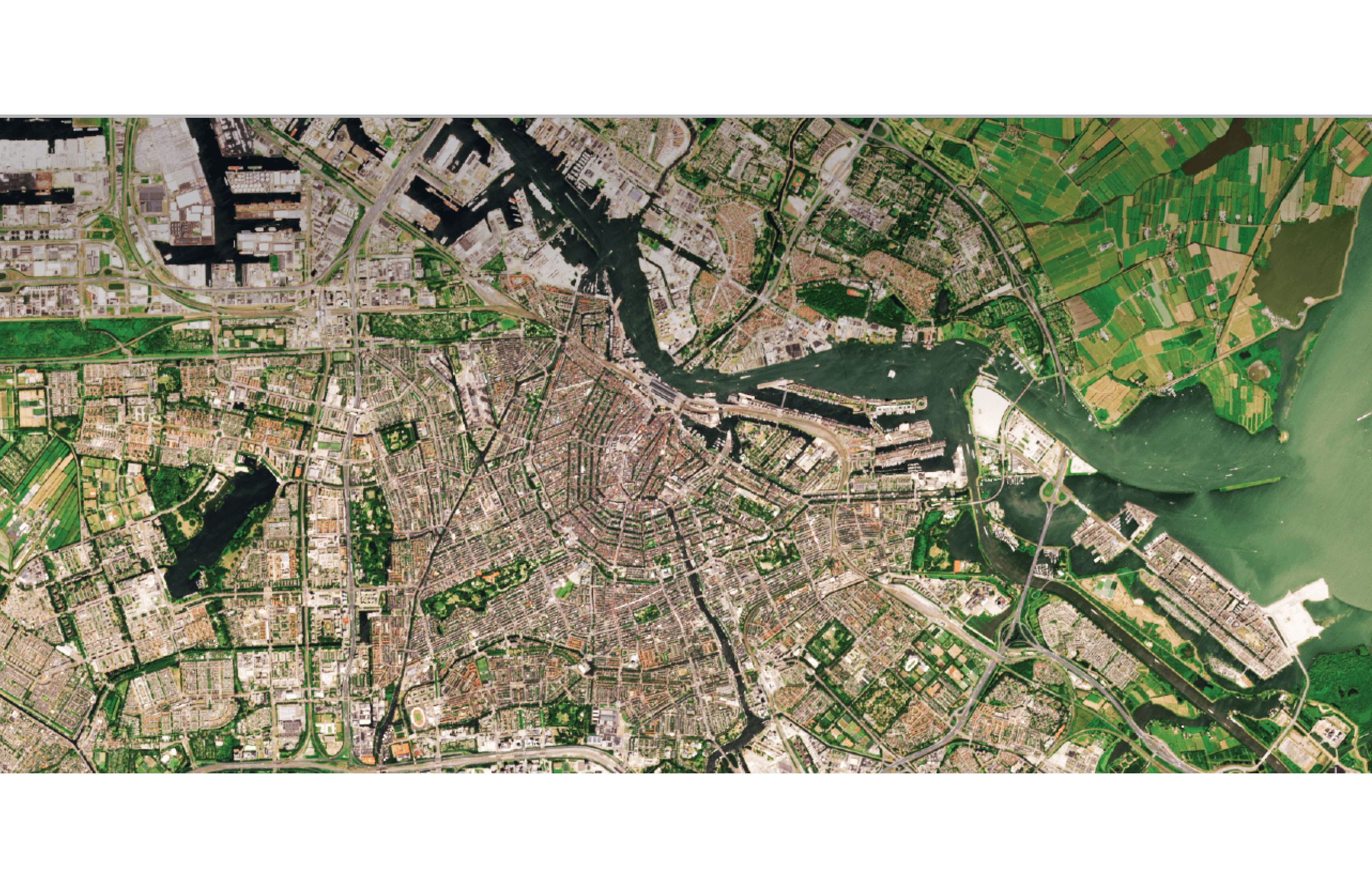
Cities on the east coast of the U.S., including New York City and Miami, are particularly vulnerable, along with major cities in South East Asia, such as Bangkok and Shanghai... By 2050, 800 million people will live in cities where sea levels could rise by more than half a meter."
"NATURAL DEFENSES LIKE DUNES, WETLANDS, MUSSEL BEDS, FORESTS AND OYSTER REEFS CAN HELP TO KEEP US SAFE FROM FUTURE DISASTERS...
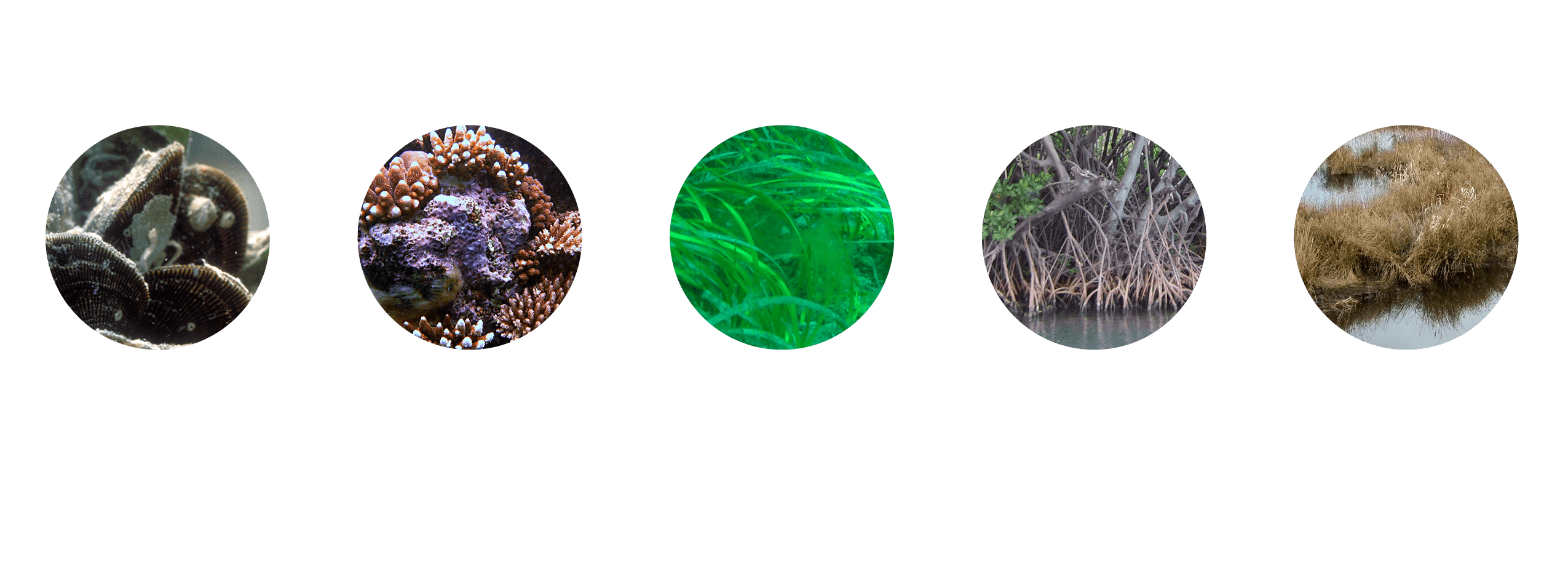
...by absorbing floodwaters, reducing wave energy and helping defend against storm surges, with the added benefits of increasing wildlife habitat, absorbing carbon pollution that is the cause of climate change, and making our cities more aesthetically pleasing and livable.”
Source: Rising Seas - Sea Level Rise and Coastal Flooding: A summary of The Future We Don’t Want, research on the impact of climate change on sea levels. C40 Cities. | Natural Defenses - Urban Coastal Resilience: Valuing Nature’s Role. The Nature Conservancy.
WETLAND RESTORATION
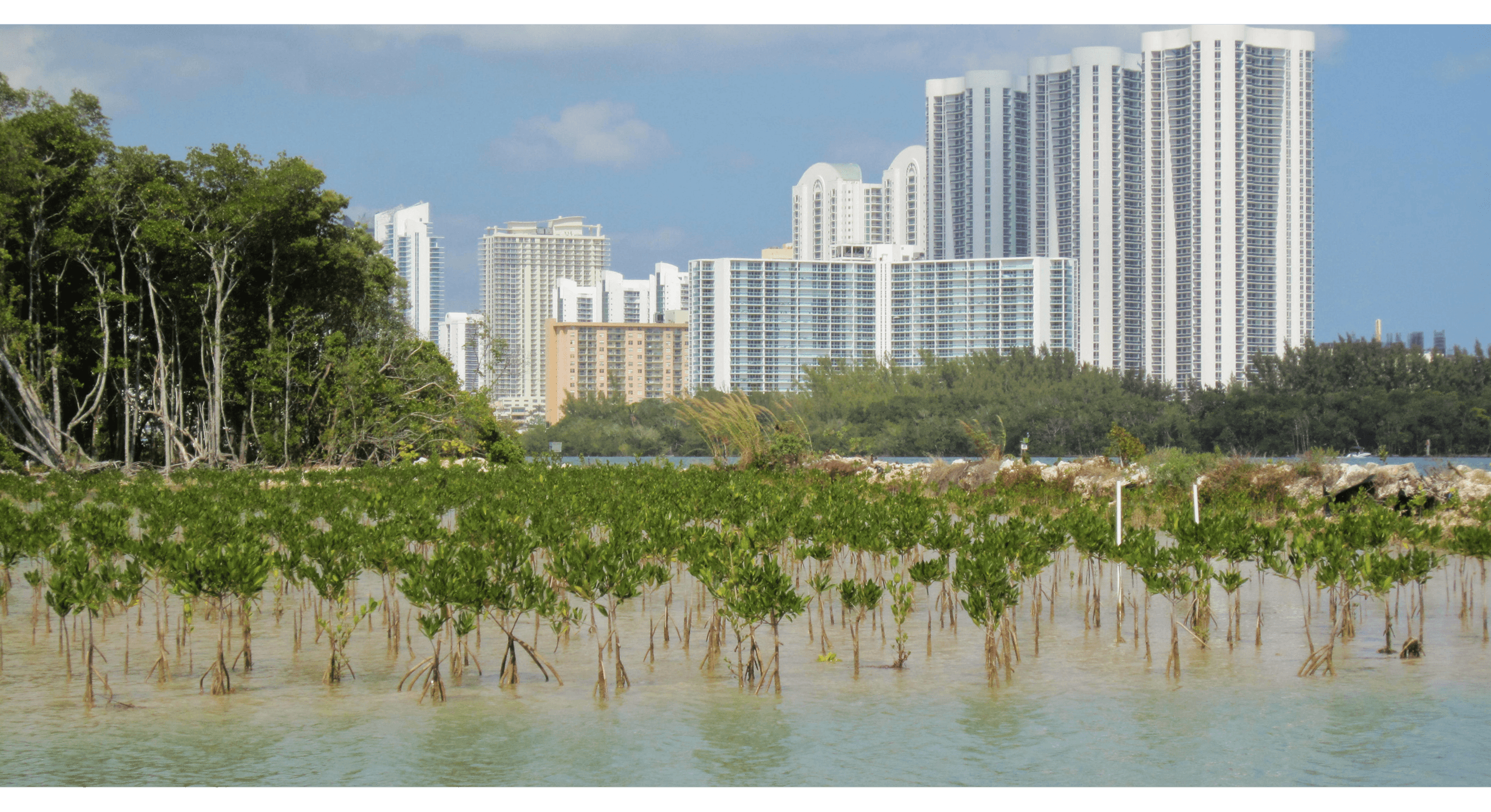
mangrove restoration in North Miami
WETLANDS SEQUESTER AND STORE THREE TIMES MORE CARBON PER AREA THAN TROPICAL RAINFORESTS.
“With sea levels rising, coastal communities...are realizing the value of wetlands as important buffers against flooding and tidal surges.”
Source: Stutz, Bruce. “Why Restoring Wetlands Is More Critical Than Ever Along the Delaware River Estuary.” Yale Environment 360. 7/28/2014; Image: Richard Mc Neil, CC BY 3.0 <https://creativecommons.org/licenses/by/3.0>, via Wikimedia Commons
OYSTER REEFS

"NOT ONLY DO OYSTERS FILTER POLLUTION FROM WATER AS THEY DINE ON MICROORGANISMS, BUT THEIR COLLECTIVE BRAWN CAN ALSO SMACK DOWN WAVE ENERGY."
“[Oyster] reefs provided significant coastal protection from waves prior to their disturbance between 1600 and 1800.”
Source: “This New York storm barrier could have slowed down Sandy. But European settlers ate it.” Darryl Fears, Washington Post, 3/10/2016.
DUNES & CORAL REEFS
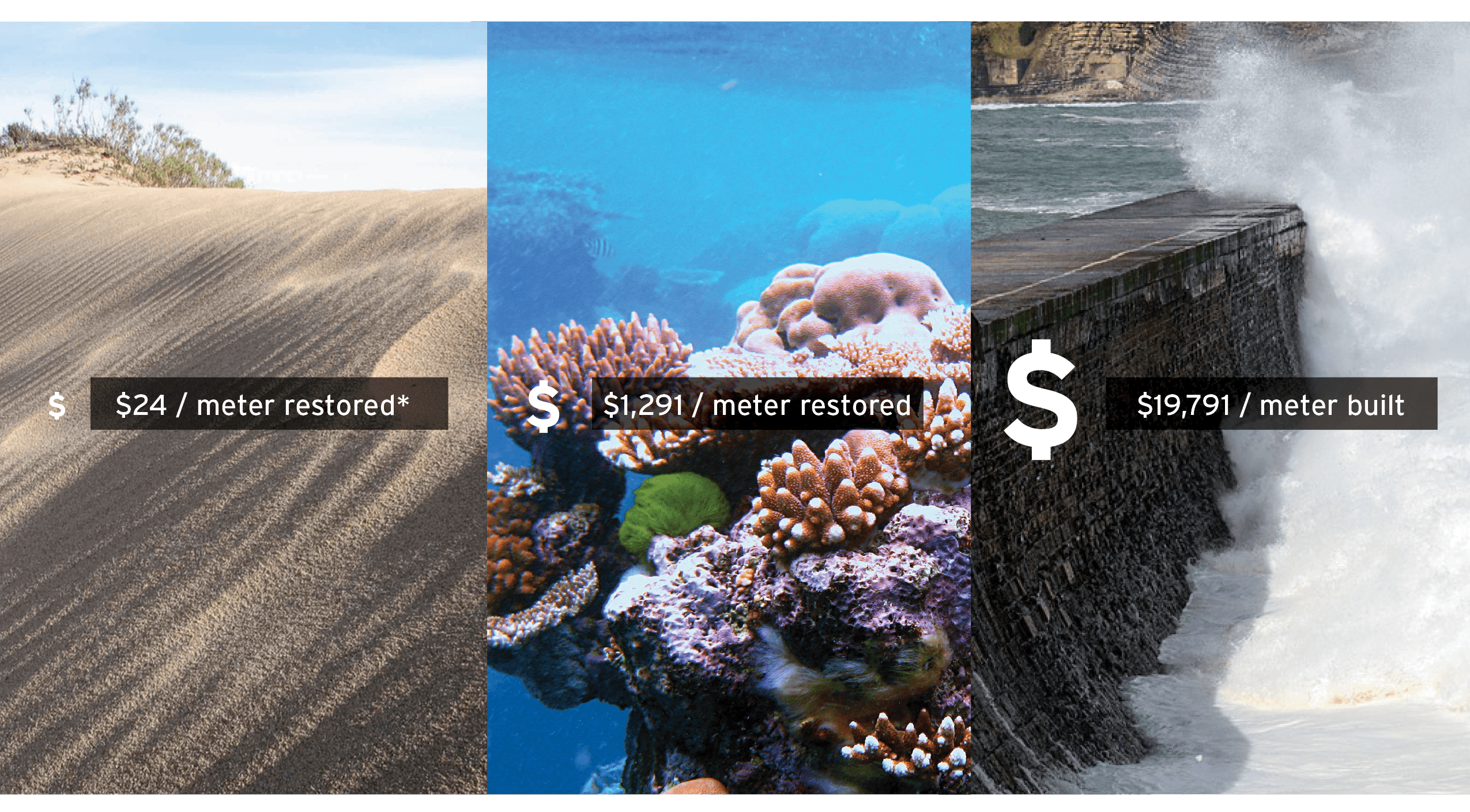
HOW WOULD YOU RATHER YOUR TAX DOLLARS BE SPENT?
"These natural and hybrid approaches may be more cost-effective in the long-run in comparison to built infrastructure, can strengthen the social, economic and ecological resilience of coasts, maintain the provisioning of coastal ecosystem services, and prevent the loss of life and property."
Source: “Future of our coasts: The potential for natural and hybrid infrastructure to enhance the resilience of our coastal communities.” Sutton-Grier et al. 2015. "Want to protect cities from the rising seas? Try coral reefs." Vox. Brad Plumer. May 14, 2014. "Coastal Systems and Low-lying Areas" Chapter 6, IPCC 4th Assessment Report. Jenks, G. K., et al 2007. *assumes volunteer community labor, but covers all material costs
Next solution



Learn about Maya Lin’s fifth and final memorial: a multi-platform science based artwork that presents an ecological history of our world - past, present, and future.

Discover ecological histories and stories of former abundance, loss, and recovery on the map of memory.

Learn how we can reduce our emissions and protect and restore species and habitats – around the world.

See how art can help us rethink the problems we face, and give us hope that each one of us can make a difference.

Help make a global memorial something personal and close to home. Share your stories of the natural world.